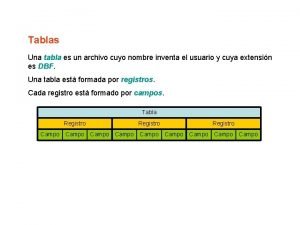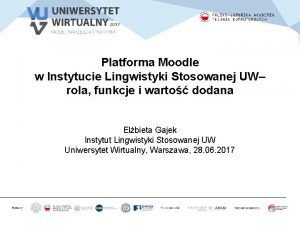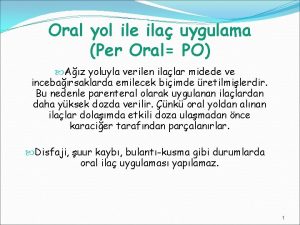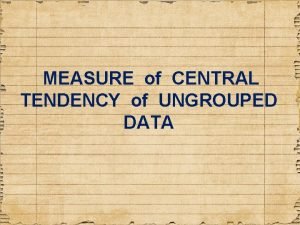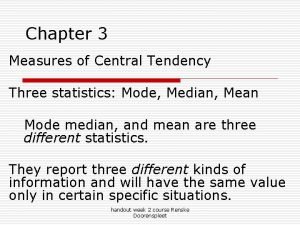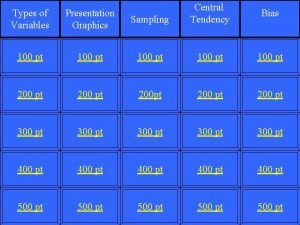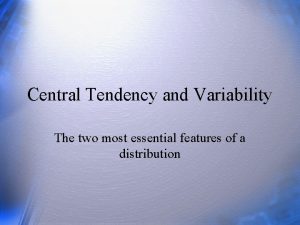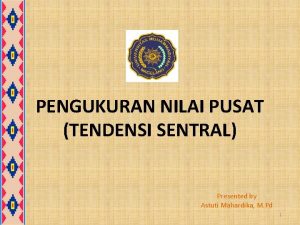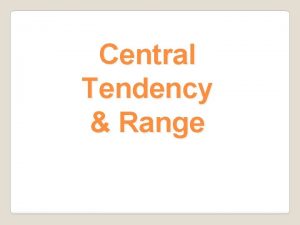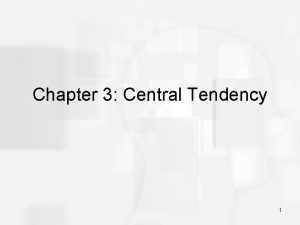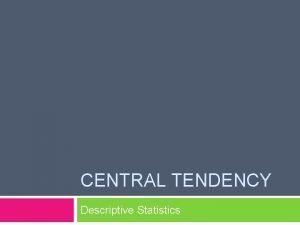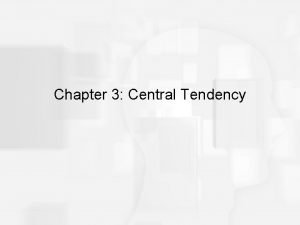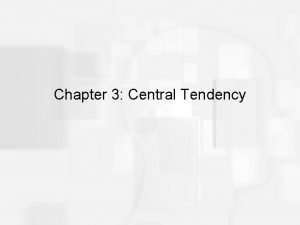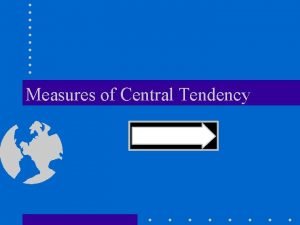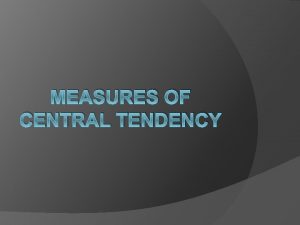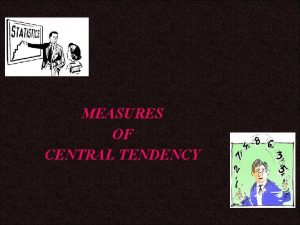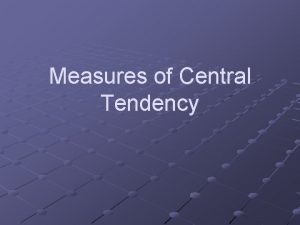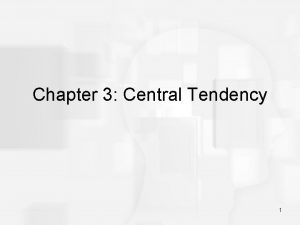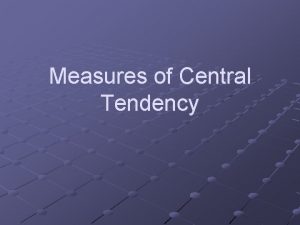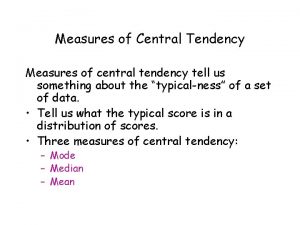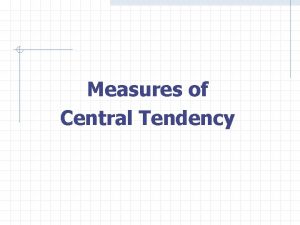DRAL 2 ILA 2014 UNDERSTANDING CENTRAL TENDENCY Wannapa














- Slides: 14

DRAL 2/ ILA 2014 UNDERSTANDING CENTRAL TENDENCY Wannapa Trakulkasemsuk King Mongkut’s University of Technology Thonburi

WHY STATISTICS? RESEARCH Qualitative VS Quantitative Mixed-method

MEASUREMENT SCALES Nominal scales: e. g. 1 = teacher 2 = engineer 3 = doctor 2 = neutral 3 = disagree no/less quantitative value Ordinal scales: e. g. 1 = agree Interval scales: e. g. time, numbers of things Ratio scales: e. g. weight, height, distance quantitative value

CENTRAL TENDENCY

CENTRAL TENDENCY Mean : interval, ratio scales Median : ordinal, interval, ratio scales Mode : all types of scales

MEAN Data (test scores): 99, 54, 50, 42, 38 Mean = 99 + 54 + 50 + 42+ 38 = 56. 6 5 Centre? How would you interpret this mean score (56. 6)?

MEDIAN Data (test scores): 99, 54, 50, 42, 38 Median = 99, 54, 50, 42, 38 = 50 Weakness Data 1: 70, 50, 35 Data 2: 52, 51, 50, 49, 48

MODE Data: Rating Frequency 1 2 3 4 5 (very disagree) (neutral) (agree) (very agree) 30 14 14 13 30 Mode = 1 and 5 (bi-modal) Mean = 3. 02 Median = 3 distribution = skew/not normal mode = better than mean and median

CENTRAL TENDENCY Mean More complex calculation, More powerful (? ), More familiar (? ) Median Mode less complex calculation, less powerful (? ), less familiar (? ) what method to use = type of scales, data distribution, purpose, appropriateness

RESEARCH QUESTIONS 1. What do teacher-researchers in Applied Linguistics think about using statistics in their research studies? 2. How do they understand use ‘central tendency’?

METHOD Subjects: 7 Thai teachers of English at KMUTT with experience in doing research in Applied Linguistics Instrument: (informal) semi-structure interview

FINDING I: GENERAL ATTITUDES TOWARDS THE USE OF STATISTICS IN RESEARCH STUDIES STATISTICS = DIFFICULT but USEFUL

FINDING II: KNOWLEDGE AND USE OF ‘CENTRAL TENDENCY’ KNOWLEDGE: Mean = most familiar method Median/Mode = unfamiliar methods USE: Mean = most frequently used method Median/Mode = never used methods

CONCLUSION As central tendency is commonly used/found in Applied Linguistics research, researchers in the field should be aware of the methods and choose the most appropriate one to interpret data.
 Ila bibbia
Ila bibbia Www.cead.intraer
Www.cead.intraer Indice ila
Indice ila Allahumma fi shahri ramadan
Allahumma fi shahri ramadan Ils uw moodle
Ils uw moodle P.o ilaç uygulaması
P.o ilaç uygulaması Novalung ila active
Novalung ila active Frisco gt training programs
Frisco gt training programs Oligoamnios clasificacion
Oligoamnios clasificacion Measures of central tendency for ungrouped data
Measures of central tendency for ungrouped data Central tendency symbols
Central tendency symbols Statistics chapter 3 measures of central tendency
Statistics chapter 3 measures of central tendency Central tendency bias
Central tendency bias Central tendency and variability
Central tendency and variability Fraktil adalah
Fraktil adalah


